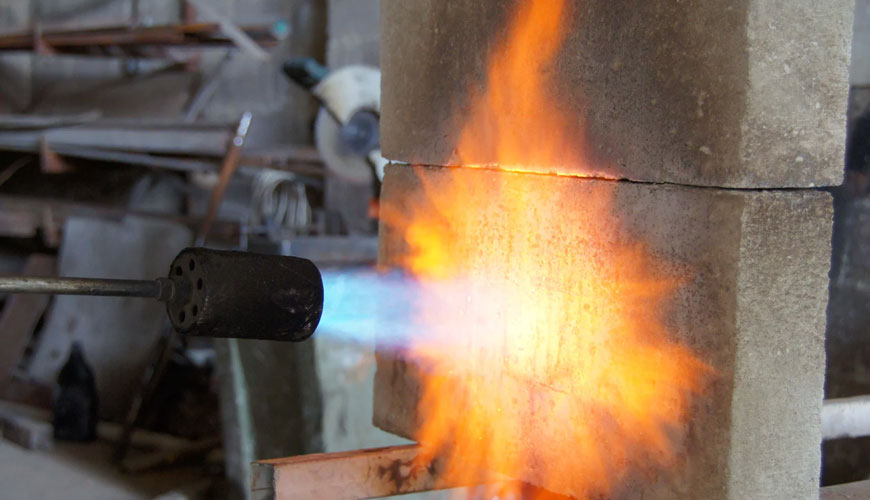

EUROLAB laboratory provides testing and compliance services within the scope of DIN 4102-1 standard. This part of the DIN 4102 standard defines fire behavior classes for building materials and specifies the requirements and test methods for each class. It applies to sheet materials (including boards and floors), composite materials, material groups, coatings, insulation, coatings, pipes and fittings, decorative materials, curtains and other materials hanging from the ceiling, fire retardants and intumescent coatings.

The classification specified in this standard serves to evaluate the fire behavior of materials alone or in combination. Fire behavior depends not only on the nature of the material, but also on its shape, surface properties, density, treatment, and combination with other materials, including any binders or fasteners used. These factors should be considered when preparing tests, selecting samples, evaluating test results, and marking materials.
DIN 4102-1 Oven Test
Samples should be representative of the material. Material samples delivered with a thickness of less than 40 mm will consist of several layers; in this case, each layer shall be cut to 40 mm in length and 50 mm in height and, if necessary, thinned to a total thickness of 40 mm. The thickness of compressible materials shall be the thickness obtained under a load of 0,1 kN/m2 per unit area.
For materials containing varying amounts of flammable components (eg binders), the component with the highest flammability will be tested. For components with lower flammability, it is sufficient only to quantify them (eg by checking the ignition loss).
DIN 4102-1 Test Procedure
The oven is preheated to (750 t 10)°C; this temperature will remain constant within t 1°C for at least ten minutes prior to testing without needing to readjust. The energy entering the heating element will remain constant throughout the test.
The sample is suspended in the heating tube in line with the central thermocouple connection. The original sample surface or - in the case of asymmetrical samples - the least suitable surface in terms of fire behavior is to face the thermocouple, which will be placed in the middle of the width of this surface. Multi-layer specimens will hang like The oven door should not be opened for more than five seconds while the sample is suspended. The test period begins when the lower edge of the sample passes the upper edge of the heating tube. The sample is left in the oven for at least 15 minutes until the maximum oven temperature is reached.
If the initial furnace temperature has still not risen after 30 minutes, only one sample needs to be tested until the maximum temperature is reached (but no longer than 90 minutes), provided that the other samples behave similarly during operation.
If the pilot flame is extinguished by gases released by the sample, it should be immediately re-ignited with a burner that produces a gas flame of approximately 20 mm in length. If the first attempt fails, further attempts will be made every 15 seconds. The oven door should not be opened during the test. The holes in the bottom plate will be cleaned before each test.
Among the services provided by our organization within the framework of material testing services, there are also DIN 4102-1 standard tests. Do not hesitate to contact our laboratory EUROLAB for your testing and certification requests.
To get an appointment, to get more detailed information or to request an evaluation, you can ask us to fill in our form and reach you.